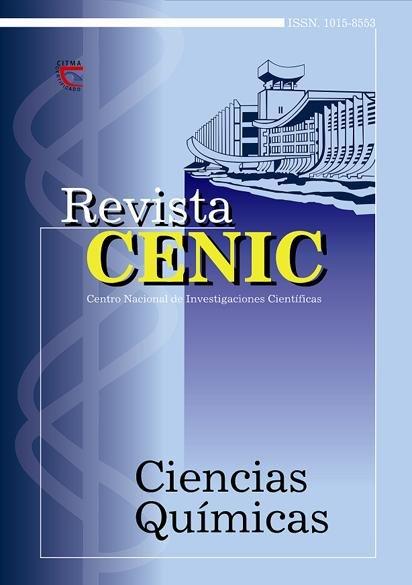Kaolin mineral fillers and Cuban CaCO 3 as fillers in rubber formulations
Abstract
The introduction of fillers into polymeric material formulations is avery employed and effective way for modifying their properties, the incorporation of solid, gaseous or liquid substances to the polymers which homogeneously distribute by self-inside of their volume and create a well-defined interphase with the polymeric part. The most employed fillers has been solids of organic or inorganic nature as well dispersing dust. The volume increasing originates by means of the incorporation of these fillers parallely diminish product costs. As the same time, this process facilitates to improve some physical mechanic and technological properties of polymeric material. The obtaining reinforcement of caoutchouc incorporating well disperse fillers into rubber mixes consists on a significative increasing of their consistence and improving of some of their properties. In this paper calcium carbonate and gray kaolin from Cuba were evaluated as fillers in rubber composites with SMR-20 natural rubber form Malaysia and NR from Brazil, and with styrene-butadiene SBR-1502 type synthetic rubber. Calcium carbonate from Brazil was also evaluated. The analytical data from density and surface area determinations, morphology, particle size distribution, rheometrical behavior of the composites during the mixing and vulcanization process and the mechanical and physical properties of the composites shows that gray kaolin gives to the rubber composites better properties than the other fillers. This behavior was remarked in natural rubber cases.
Downloads
Published
How to Cite
Issue
Section
License
Copyright (c) 2001 Copyright (c) 2001 Revista CENIC Ciencias Químicas

This work is licensed under a Creative Commons Attribution-NonCommercial-ShareAlike 4.0 International License.
Los autores que publican en esta revista están de acuerdo con los siguientes términos:
Los autores conservan los derechos de autor y garantizan a la revista el derecho de ser la primera publicación del trabajo al igual que licenciado bajo una Creative Commons Atribución-NoComercial-CompartirIgual 4.0 que permite a otros compartir el trabajo con un reconocimiento de la autoría del trabajo y la publicación inicial en esta revista.
Los autores pueden establecer por separado acuerdos adicionales para la distribución no exclusiva de la versión de la obra publicada en la revista (por ejemplo, situarlo en un repositorio institucional o publicarlo en un libro), con un reconocimiento de su publicación inicial en esta revista.
Se permite y se anima a los autores a difundir sus trabajos electrónicamente (por ejemplo, en repositorios institucionales o en su propio sitio web) antes y durante el proceso de envío, ya que puede dar lugar a intercambios productivos, así como a una citación más temprana y mayor de los trabajos publicados (Véase The Effect of Open Access) (en inglés).














